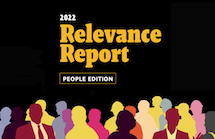 |
| Jon Gingerich |
We’re almost two years into this pandemic, and big surprise, business leaders are desperate to get employees back into the office. For months, companies have been setting return dates and beginning the slow crawl back to normal. Unfortunately, our “great wait” has been complicated by a recent surge in COVID-19 cases due to the Delta variant, once again postponing those plans and confirming the concerns of employees who remain leery of in-person work amid ongoing health and safety concerns, all of which has reignited the debate on what role office life plays in post-pandemic America.
According to an August Gartner survey of more than 200 executives, two-thirds of organizations (66 percent) reported delaying re-opening their offices in light of the lingering pandemic. In September, Google once again announced it would hold off on its return-to-office plans, now slated for January 2022 (the tech behemoth had previously announced that workers would return in October, and before that, September, and before that, July). Google’s latest flip-flop followed announcements from Apple, Amazon, Facebook and Microsoft, which have all similarly postponed their office re-openings.
| This article is featured in O'Dwyer's Oct. '21 Healthcare & Medical PR Magazine (view PDF version) |
Employees are understandably frustrated by all this. A September study released by JLL found that 41 percent of respondents feel exhausted by their employer’s constant waffling on return-to-work plans, with another 32 percent claiming their employer hasn’t shared any plan with them at all.
What’s compounding all this frustration is the fact that, after working from home for more than a year, office life as we knew it is effectively an antiquated concept. Anytime there’s a disruption to the system, the world realigns in response. We adapt. People have relearned how to do their jobs, we’ve grown accustomed to the work-from-home lifestyle and we want the benefits and flexibility we’ve been allotted these last 18 months to continue indefinitely. Some are planning on changing jobs if and when their employer asks them to come back. Suffice to say, no booster shot will address the adjustments we’ve made once the pandemic finally ends.
The benefits of virtual work are manifold. It’s good for the environment, and for working parents, it provides a more manageable work-life balance. For companies no longer renting office space, it’s saving businesses a fortune. There are all kinds of debates—and polls—circulating regarding how remote work has either boosted productivity or tanked it. I’ll just say productivity at home probably depends on the individual worker and the job/industry in question. The only thing that’s certain is that going back to business as usual will be a tall order.
While the benefits of remote work abound, I can’t help but consider the social costs to a life where many of us are no longer leaving the house. We talk about the physiological impacts of COVID, but we rarely discuss the psychological effects that lockdowns and quarantines and essentially giving up on person-to-person interaction have had on our mental health. We’ve been riddled with anxiety from the beginning of this pandemic, and being removed from the people close to us certainly hasn’t helped. We’re a social species; we value meaningful connections with others. And do I need to mention that managing family life while trying to do one’s job isn’t exactly the ideal model of a work- and home-life in perfect balance?
Perhaps that’s why a well-publicized Morning Consult poll that appeared in The New York Times in August found that nearly half (45 percent) of workers now want to return to the office full-time, compared to less than a third (31 percent) who want to remain remote full-time. People are feeling disconnected from the communities they had in the workplace, and there are clear benefits to the work we do when we’re allowed to collaborate in person with others. It’s human nature.
I can only speak from personal experience. Since March 2020, the creative writing class I teach has moved to the Zoom platform. Admittedly, there are benefits to remote teaching—the convenience of not taking a train into the city, for one—but I’ve learned that teaching virtually will never replace the experience of a live classroom, where eye contact, body language and allowing students to collaborate in an analogue environment are fundamental to learning. It’s just not the same. Also, speaking only for myself: I like getting out of the house. I like having my work life and my home life partitioned. I don’t like the expectation of being on call all the time. I like physical reality. I like seeing people.
It’s going to require a Herculean effort for business leaders to turn the tide and make in-person work the cultural norm again. Most likely, some employers will resort to offering incentives to lure workers back, be it a shortened workweek or some sort of hybrid approach, where employees are allowed to work from home for several days and make office appearances for the rest. Many will require employees to get vaccinated before they return, and of course, COVID safety protocols will be around for some time. Whatever happens, it’s clear that the office environment will never be quite what it was, and it will no doubt take time for us to adjust to yet another new normal. Eventually, we’ll see each other again. I can’t wait.


 Americans head into 2022 politically engaged and with a renewed focus on self-care, which includes a desire to avoid the office at all costs, according to the USC Center for PR’s latest Relevance Report.
Americans head into 2022 politically engaged and with a renewed focus on self-care, which includes a desire to avoid the office at all costs, according to the USC Center for PR’s latest Relevance Report. Bob Gold, the founder of Bob Gold & Associates, tells about how he—and his agency—survived COVID.
Bob Gold, the founder of Bob Gold & Associates, tells about how he—and his agency—survived COVID. The Oklahoma Dept. of Health has hired Oklahoma City-based Saxum to handle COVID-19-related communications.
The Oklahoma Dept. of Health has hired Oklahoma City-based Saxum to handle COVID-19-related communications.


 Have a comment? Send it to
Have a comment? Send it to 
Oct. 5, 2021, by Joe Honick
Certainly a valid recitation of the "home working" realities...except for one huge and major reality: during the "situation", records show that CEO's and others at the top were getting salary or other benefit increases not granted the hard working folks watching kids while working at home and trying to keep smiling while dealing with customers and others. It may well be among the reasons so many "HIRING" signs are going unanswered all over the place. These and other relalities will soon rise to more employee vocal and media commentary.